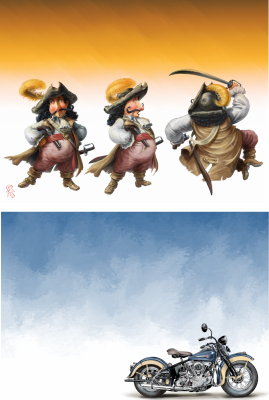
| • | To apply a paint effect to a gradient |
You can apply different paint styles to gradients created with the Interactive Gradient tool.
| To apply a paint effect to a gradient |
|
| 1 . | Click the Interactive Gradient tool |
| 2 . | Click the Preset flyout button |
| 3 . | Choose settings from the property bar. |
| Make sure the Edit nodes option on the property bar is enabled. |
| 4 . | Perform a task from the following table: |
|
Select a layer in the Layers panel. Click and drag on the layer.
|
|
|
Select a channel in the Channels panel. Click and drag on the channel.
|
| 5 . | Click the Express Paint |
| To preview the paint effect in the image window, enable the Preview Effect option. |
| To change the size of the brushstrokes that the paint effect will apply, move the Size slider. |
| To set the number of the brushstrokes that the paint effect will apply, move the Amount slider. The smaller the size, the more brushstrokes you need to render the entire gradient. |
| 6 . | Click the Commit Gradient button |
The smaller the brushstroke size, the longer it takes to apply the paint effect.
You can apply a paint effect only to a gradient that you draw with the Interactive Gradient tool.
To stop the auto-painting at any time, click in the document window.
To quickly draw and commit a gradient without previewing a paint effect, click the Interactive Gradient tool in the toolbox, click the Preset flyout button
![]() on the property bar, and choose a gradient. Disable the Edit nodes option on the property bar, click the Express Paint
on the property bar, and choose a gradient. Disable the Edit nodes option on the property bar, click the Express Paint ![]() button on the property bar, choose an auto-painting style, and then draw the gradient. The paint effect will be applied automatically as you lift the stylus to commit the gradient.
button on the property bar, choose an auto-painting style, and then draw the gradient. The paint effect will be applied automatically as you lift the stylus to commit the gradient.